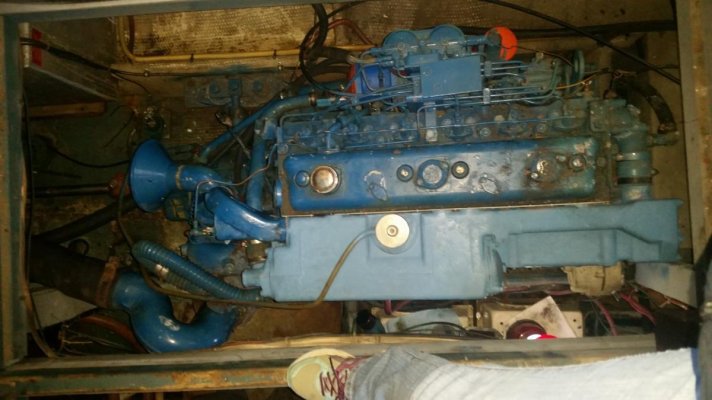This the reply from my friend in the marine propulsion and systems industry to the comment quoted below. It's long but it seems to address the issue pretty thoroughly. Again, this NOT my area of expertise. I am passing this on as it seems to me to be information from a professional source that people who have an interest in the subject would benefit from reading.
-----------------------
"No it won't melt the pistons as it enters the combustion chamber before fuel is injected. Your friend is right about that. But the combustion gasses that result will be hundreds of degrees hotter due to the air starting out hotter. That is what will melt pistons."
Not quite right ... there are components to his misunderstanding that will just add more confusion to most readers.
Air has weight, it has a property called "specific heat" which, simplistically, is the number of BTUs or amount of heat required to raise the temperature of a given mass a given amount. There is a difference between heat and temperature. A candle flame might produce a very high temperature but it will not produce much heat. You can pinch the flame between your fingers and not get burned because there is not enough heat to raise the temperature of your skin to the level that will cause damage.
A turbocharged diesel uses the turbo to compress charge air above ambient pressure, which in the case of a normally aspirated engine will be less than atmospheric pressure. The additional air provided by “boost” above atmospheric pressure provides enough oxygen to support burning more fuel and thereby produce more power than a normally aspirated (NA) engine.
To eliminate the need to add structural strength and weight to achieve this end, the turbocharged engine has a lower compression ratio and the capability of injecting more fuel than its NA cousin. The turbocharged engine also incorporates a slightly different valve timing scheme that provides a period of “overlap” at the end of the exhaust stroke so that both inlet and exhaust valves are open simultaneously for a short period. The purpose of this is to allow comparatively cool charge air to more completely scavenge exhaust gases from the cylinder and to cool the exhaust valves.
Not all turbocharged engines are inter or (more properly) after cooled, but when high performance (and these days – low emissions) is the goal, a charge air cooler increases the charge air density to allow more fuel to be burned to create even more power.
The amount of heat present in the “… hundreds of degrees hotter …” but much less dense charge air is not the reason for higher exhaust gas temperature. The fact that the hot charge air is less dense and does not provide enough oxygen to completely burn the amount of fuel required to produce the power needed for the engine to operate at the load imposed on it means that because it is in effect overloaded, cylinder pressure and exhaust temperature rises accordingly. In addition, the less dense charge air is incapable of scavenging the cylinder as thoroughly and because it has less mass (remember specific heat), is less capable of removing heat from the valves during the overlap period.
A poorly performing turbocharger will cause valve damage related to high cylinder temperatures because it does not produce enough mass (oxygen) to properly burn the fuel required to produce the desired high power output or to cool the combustion chamber and valves during the overlap period. This will happen even if the aftercooler is functioning normally because fuel is still burning during the exhaust stroke.
It is the mass of air, not its temperature that matters most. The fact that they are related is coincidental. As a matter of fact, higher temperature charge air improves fuel vaporization and reduces ignition lag which is a good thing. The bad side is that it also increases emissions and the overall heat load on the cooling system. In the case of a small engine that is not expected to produce a very high power output, the major problem with high charge air temperature is reduced power output, marginal cooling system performance, and higher fuel consumption.

 . I can bother Em if you want a picture of anything...(I'm away for another 2 weeks)
. I can bother Em if you want a picture of anything...(I'm away for another 2 weeks) .
.

